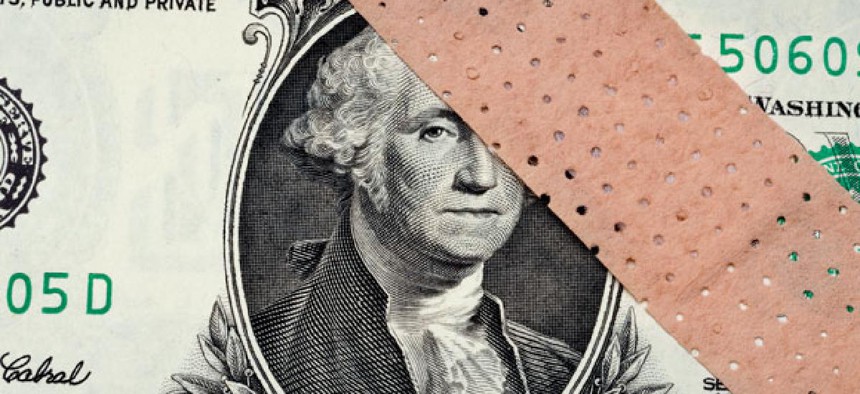Why the vote to suspend the debt ceiling didn't end the threat to the U.S. economy
Delaying the fight could make matters worse if it just puts the economy in a holding pattern for the next several months.
Washington breathed a sigh of relief this week when the House passed a bill to temporarily suspend the debt ceiling through May 18—pushing off a massive fiscal fight for yet another day.
To the Democrats, it seemed that House Republicans had finally realized that brinkmanship over the economy was bad for their brand. Politically, the delay bought the Republicans more time to develop a strategy to enact the deeper spending cuts they so desire. But no one should break out the bubbly or plan any summer vacations just yet.
Pushing off the debt-ceiling battle until mid-May still poses major risks for the economy and may even heighten the severity of the economic impact. Prolonging the debate and putting it at the end of the spring’s fiscal-fight queue, after the sequester and the question of funding the government, only keeps investors and markets nervous for a longer period of time. If the debt ceiling is suspended through May 18, the Treasury Department’s extraordinary measures could kick in anew and keep the government funded through July and into early August. This leaves an additional seven months of uncertainty, a situation that economists such as Simon Johnson of the MIT Sloan School of Management dislike.
“You will continue to undermine the private sector. You will continue to delay investment and to reduce employment relative to what it would be otherwise,” Johnson said at a recent House Ways and Means Committee hearing.
The prospect of failing to raise the debt ceiling freaks out investors and financial markets so much because it means the U.S. government would not be able to pay the bills on debt it has already accrued. In the real world, default would mean that military officers may not get paid. Little old ladies would not receive Social Security checks, and the equity markets might go haywire, tanking people’s 401(k)s and pensions.
Mostly, the idea of defaulting is scary because no one is quite sure exactly what would happen. It’s like the no-man’s-land of fiscal policy. There is “no guarantee of the outcome; risks are risks,” writes the Bipartisan Policy Center in its comprehensive debt-ceiling analysis.
Of course, other fiscal speed bumps lie ahead. A potential government shutdown in late March (when Congress will need to vote to keep government operations funded) would slow economic growth in the second quarter by roughly one-fourth of a percentage point for every week it lasted, says the forecasting firm Macroeconomic Advisers. Few analysts expect such a shutdown, if it happens, to last long. Still, it would force 36 percent of nonessential federal employees to take time off and lose pay, according to the firm’s calculations. National parks might close for a few days, and defense contractors might lay off some workers.
But that hardly compares to the economic impact of defaulting on the national debt, according to Steve Bell, senior director of economic policy at the Bipartisan Policy Center. “A government shutdown has almost no long-term economic impact on the country,” he says. “We did this in 1995 and 1996, and nothing happened, even though everyone ran around with their hair on fire. Afterward, people yawned and went back to work.”
The debt-ceiling fight is larger and scarier because it hints at the shakiness of the country’s long-term economic picture. The federal government cannot afford all of the programs it has promised over the next few decades.
The threat of default—and this is just the threat, mind you—may be enough to slow down economic growth by about half a percentage point in 2013, according to new data from Macroeconomic Advisers.
This uncertainty eats up the Treasury Department resources, hampering its ability to tackle big-picture fiscal matters such as overhauling the tax code. In the summer of 2011, the possibility of default proved to be expensive. It cost the Treasury $1.3 billion in additional borrowing, according to a Government Accountability Office analysis.
As investors and business executives know, no temporary suspension of the debt ceiling will make it any easier to deal with the consequences of hitting the limit—which will eventually happen, because the move is no permanent fix.
“If you’re a businessperson trying to make a long-term investment decision on opening a plant, this [suspension] does not change your calculus that much,” says Michael Hanson, a senior economist at Bank of America Merrill Lynch. “It’s encouraging if it’s moving away from brinkmanship, but it isn’t obvious that this is what the signal is yet.”
And that’s the greatest economic hit of all: Washington’s perpetual muddied and mixed signals on fiscal matters.
(Image via Vince Clements/Shutterstock.com)



